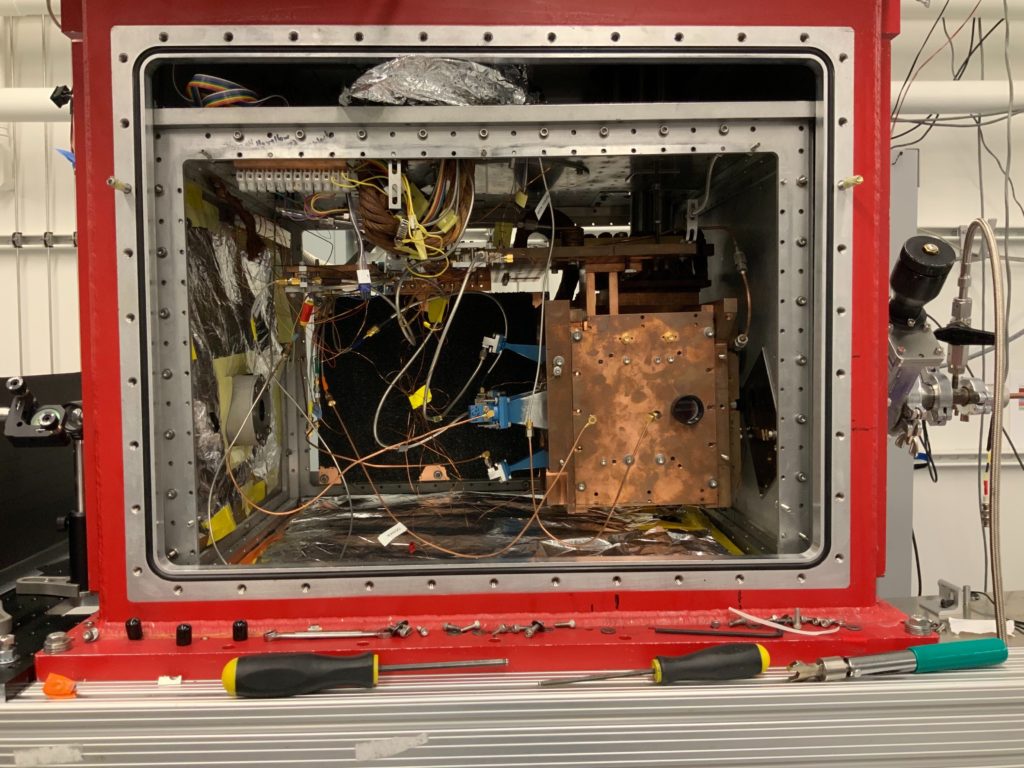Molecules are tiny, spinning electric dipoles. Quantum mechanics constrains these dipoles to rotate at certain specific frequencies – frequencies which are different for every molecule. Measuring such frequencies reveals intricate quantum behavior within these molecules, and also provides an astoundingly specific fingerprint of the compounds within complex mixtures. Extensions of these techniques can also reveal the chirality of the analyte – a difficult to measure quantity that is often of crucial importance in biochemistry.
To date, microwave spectroscopy has played a tiny role in analytical chemistry. This is largely because of the small signal sizes: the technique extracts at best a single microwave photon – with a typical energy of a micro-electronvolt – per molecule per experimental cycle. New techniques developed in the Patterson group and elsewhere yield bright, continuous sources of cold molecules can collect data orders of magnitude faster than traditional methods – at present we accumulate data far faster than we can process it.
The primary goal of the chemistry analysis project at UCSB is to bring this power to bear on real world chemistry, biology, and physical systems. The center of the project is our data – bright, complex, resolved spectra containing unambiguous fingerprints of thousands of compounds, isotopomers, stereoisomers, and enantiomers.
We currently have two projects going in this domain: Chiral analysis, and time-resolved gas-phase molecular cluster analysis.
You can download many of our spectra.


